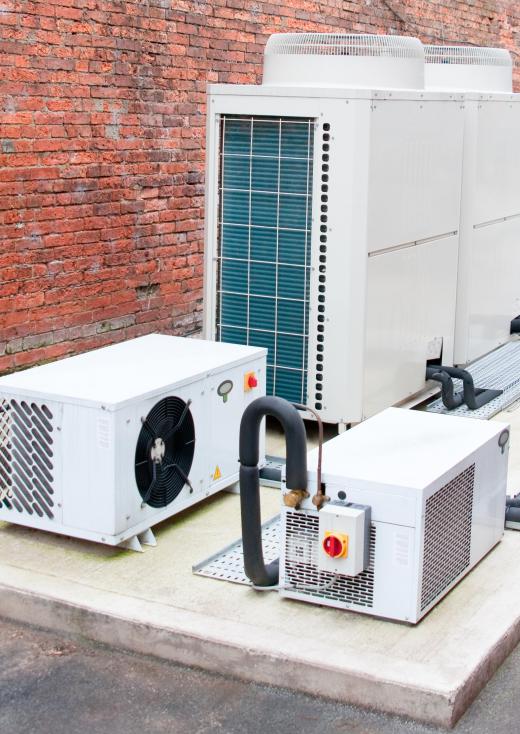A squirrel-cage rotor serves as a key component in many types of electric induction motors. This device was invented during the 19th century by Nikola Tesla, who made numerous contributions to the field of electricity. The squirrel-cage rotor is part of a squirrel cage motor, which is often used in self-exciting induction generators and in air conditioning systems. These rotors are also used in many types of industrial and manufacturing equipment and machinery. This device resembles a large hamster wheel, which many believe is what gives this rotor its name.
The core of the squirrel-cage rotor consists of a heavy-duty metal shaft. A cage-like device made of intersecting copper or aluminum bars wraps around the outside of the shaft. The entire cage and shaft are embedded in a series of steel discs, which are laminated over top of one another perpendicular to the shaft. A heavy steel or copper ring, known as an end ring rests at either end of the stack of laminated discs to provide support and stability.

Induction motors feature fairly basic operation, and use just two basic components, which include a stator and a rotor. As electric power flows into the stator, it produces a magnetic field. When this magnetic field reaches the squirrel-cage rotor, it produces a secondary magnetic field, which causes the rotor to spin. This spinning rotor creates an electric current, that can be used to power various objects or machinery.
Each squirrel-cage rotor must be carefully constructed to meet the demands of different types of applications. Older units were cast from copper, though that technique is rarely used today. While aluminum rotors may be die-cast, copper models are made using individual components assembled by hand. The construction and durability of the shaft and end rings are particularly critical, as failure of these units can render the rotor unusable. The bars that make up the squirrel-cage rotor are often arranged in special patterns to reduce vibration, noise, and wind resistance.
Maintenance and repair personnel must rely on special test methods when inspecting these rotors due to their unique construction. The laminated discs completely encapsulate the shaft and cage, making it impossible to detect problems visually. Instead, inspectors rely on dye-penetrant tests or even ultrasounds to identify problems with a squirrel-cage rotor.
The primary advantage of the squirrel-cage rotor is its flexibility. These rotors are appropriate for a wide range of applications, ranging from small portable generators to very large industrial equipment. Another advantage is their reliability, which stems from more than 100 years of use.
